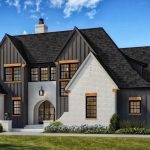New Home Construction In Chicago
The Windy City has long been a hub of economic activity and cultural vibrancy. However, rapid population growth and a shortage of available housing have created a pressing need for new home construction in Chicago. To meet this growing demand, developers have been turning to high-rise buildings and larger residential complexes to construct new housing. This article will review the factors fueling this demand and discuss best practices for developers looking to meet the housing needs of the city’s diverse population.
The Housing Market
As of 2021, the population of the Chicago metropolitan area is more than nine million people, and the real estate market is experiencing a significant demand-supply gap. According to a study published by the Metropolitan Agency for Planning, the city needs to build at least 120,000 new units of housing by 2050 to keep up with population growth. Furthermore, 38% of the housing units were built before 1940, which calls for either renovation or new construction.
Several factors are driving the demand for new home construction, including
Population Growth: The steady influx of young professionals and immigrant families continues to drive the city’s population growth.
Economic Recovery: With an expanding economy and increasing job opportunities, more people are moving to the city for work.
Affordability: Many citizens are looking for affordable housing options, but these can be hard to come by in the city’s competitive real estate market.
Best Practices For New Home Construction
To meet the needs of its growing population, developers must prioritize
Low Inventory: The combination of high demand and limited housing supply has caused some areas to reach peak prices.
Location Selection: Key Considerations
Before embarking on a new home construction project, developers need to carefully consider their location. Several factors can influence site selection, including proximity to amenities and services, transportation infrastructure, and zoning and regulatory considerations.
Proximity to Amenities and Services: Homebuyers are looking for homes that are close to essential services, schools, recreational facilities, and shopping centers. A neighborhood with walkable amenities increases home values and attracts more consumers.
Transportation Infrastructure: Developers should choose areas that offer easy access to public transportation, highways, and local roads. Accessible areas make commuting more convenient, leading to better buyer preferences.
Architecture and Design: Factors to Consider
When developing a new home construction project, the architecture and design of the building must take into account the needs and preferences of the target buyers. The style and trends offer give home builders a wide range of opportunities to appeal to buyers. However, sustainable and energy-efficient design is no longer just a fad. Modern buyers give significant importance to energy efficiency, green spaces, and environmentally responsible building techniques.
Financing and Budgeting: Plan Ahead
Developers must ensure they have appropriate financing and budgeting in place to fund their projects. Traditional mortgage options may not suffice for construction and development financing, so construction loans or government-backed programs and incentives might be a better option for a successful endeavor. The comprehensive financial plan must include cost estimation for land acquisition and development, construction costs and contingencies, and marketing and sales expenses.
The Construction Process: Best Practices
Once a developer has selected the location, designed the building, and secured financing, the construction process can begin. Developers must maintain quality control and regulatory compliance while addressing any construction issues. Periodic inspections at various stages can ensure that the project is adhering to building codes.
Marketing and Sales: Attracting the Right Buyers
Developers must craft a marketing strategy that accurately identifies their target buyers and what they’re looking for. The unique selling proposition must differentiate the development from its competition. Extensive Online and offline marketing channels will help advertise the homes, along with model homes and sales offices to showcase the development. Focusing on the customer experience, ensuring excellent customer service to buyers, and giving them adequate support through the sales process can achieve better results.
Meeting the Demand for New Home Construction
The demand for affordable housing in Chicago is growing rapidly. Developers must take into consideration location selection, architecture, design, financing, and budgeting, The demand for new home construction continues to increase due to the growing population, urban renewal, and economic upswing.
A comprehensive construction plan based on informed decisions and market analysis can help developers make smart choices that suit the demands of the local housing market. The future of new home construction looks bright, and providing affordable, well-designed living spaces for the city’s growing population will help boost the economy and the well-being of the city.
The future of Home Construction in Chicago is positive, and by carefully considering the location, design, and financing for New Home Construction projects, developers can ensure that their projects are successful and will benefit the city in many ways.




